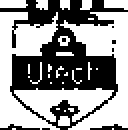West Bengal Institute of Technology (WBIT) 2008-6th Sem B.Tech Computer Science and Engineering Computer Science - Computer Network - Question Paper
// ./ 1 '
CS/B.TECH (CSE)/SEM-6/C8-601/08 3
, ' . ' . /; . ENGINEERING 9c MANAGEMENT EXAMINATIONS, JUNE - 2008 /

SEMESTER - 6
Time : 3 Hours ] I Full Marks : 70
GROUP -A ( Multiple Choice Type Questions)
1. Choose the correct alternatives of the following : 10 x 1 = 10
i) Which topology technique is a point to point configuration ?
a) Mesh b) Star
c) Bus d) All of these.
11) If the maximum value of a signal is 31 and minimum value Is - 31, how many bits are used for coding ?
a) 4 b). 5 .
c) 6 d) 7.
.110 The Hamming code is used for
a) error Detection .
b) error correction
c) error encapsulation
d) (a) and (b) both.
iv) For a 4 bit sliding window the sequence number can range from
a) 1 to 16 b) 0 to 7
c) 0 to 15 d) 8 to 15.
{' dm.
itw'iPa
v) How much channel throughput of slotted ALOHA will be in comparison tb pure ALOHA?
a) Same b) Double
c) Three times d) None of these.
vi) Which of the following network architectures does not- use the token passing access method ?
a) IEEE 802.4 b) FDDI
c) CSMA/CD d) IEEE802.5.
vii) In which OSI layers does FDDI protocol operate ?
a) Physical b) Data link
c) Network d) (a) and (b) both.
viii) Which routing algorithm requires more traffic between routers for set-up and updating ?
a) Distance vector b) Link state
c) Dljkstra d) Vector link.
ix) Which is not the congestion control transport layer policy ?
a) Retransmission b) Acknowledgement
c) Flow control d) None of these.
x) Which of the following is not IPv 6 address ?
a) Any cast b) Multicast
c) Broadcast d) Unicast.
/ . ' .. .
s/B.T*CH (CSE)/SElI-6/C8-601/08 5

GROUP -B ( Short Answer Type Questions)
Answer any three of the following. 3x5=15
2. a) What is the purpose of multiplexing ? FDM is for analog signals, TDM is for
digital signals. Explain why.
b) What should be the link capacity to multiplex 3 input signals each of 300 bits per sec speed using 2 bits/sec framing rate ? ( 11 x 2 ) + 2
3. a) Twisted pair cable offers better bandwidth than untwisted pair. How ?
b) For a 4 kHz voice channel, what should be the minimum bit rate of the digitized channel considering 128 different quantization levels ? State clearly Shanons capacity formula. ' 2 + (2+l)
4. a) Sketch the waveform for the bit stream 10110010 in differential Manchester
encoding format.
b) A binary signal is sent over a 8 kHz channnel whose signal to noise ratio is 20 dB. What is the maximum achievable rate ? Define signalling rate.
2 + (2 + 1)
5. a) What is the purpose of providing two separate protocols UDP and TCP in the
transport layer of TCP/IP architecture ?
b) Physical address operates in a local domain whereas logical address has a global domain. Explain. Define bandwidth of a media. 2 + ( 2 + 1 )
6. a) What are the problems of providing redundant path in a bridged network ?
b) How does a transparent bridge provide solution to those problems ? 2 + 3
GROUP-C (Long Answer Type Questions )
Answer any three questions. 3 x 15 45
7. a) A 10 bit data bit block 0111010111 is to be $ent using hamming code for error
detection and correction. Show how the receiver corrects an error that occurs in 6th bit position from right.
b) Explain the utility of layered network architecture. Compare ISO-OSI and TCP/IP models.
c) Differentiate circuit switching and packet switching. 6+ (2+ 4)+ 3

8. a) If a = propagation delay/transmission delay and P is the probability of frame
error then prove that channel utilization in the case of stop and wait ARQ protocol is ( 1 - P) / ( 1 + 2a ). Assume negligible sender, receiver processing time, transmission time and acknowledgement time.
b) Draw the simplified phase diagram for bringing up a line up and bringing it down in PPP and explain various phases.
c) Ethernet technology is based on broadcast protocol. Explain. What happens when a collision occurs in Ethernet communication ? 5 + 5 + ( 3 + 2 )
9. a) Differentiate static routing with dynamic routing. Explain various fields of a
typical routing table.
b) Explain link state routing principle. What is flooding ?
c) Explain count to Infinity problem. (2 + 3) + (3 + 2) + 5
10. a) What do you mean by channel utilization ?
b) Discuss and differentiate persistent CSMA and non-pertinent CSMA ?
c) Why are medium access control techniques required ? List three popular medium access control techniques.
d) A 1 km 10 Mbps CSMA/CD LAN has a propagation speed of 200 m/p sec. Data frames are 256 bits long including 32 bits of header, checksum and other overhead. The first bit slot after a successful transition is reserved for the receiver to capture the channel to send a 32 bit acknowledge frame. What is the affective data rate excluding overhead assuming there is no collusion.
1 + 2 + 5 + 7
Define congestion.
What Is the differrence between congestion control and flow control ?
Explain the working of leaky bucket algorithm. Give argument why the leaky bucket should allow just one packet pet kick Independent of how large the packet is. r

d) Using Dijkstras Routing algorithm find out a least cost route to all other nodes 1 through 6 for the following network. Do the same for Bellman Ford algorithm.

1 + 2 + 5 + 7
END
.1
VI-267011 (1-A)
|
Attachment: |
| Earning: Approval pending. |
